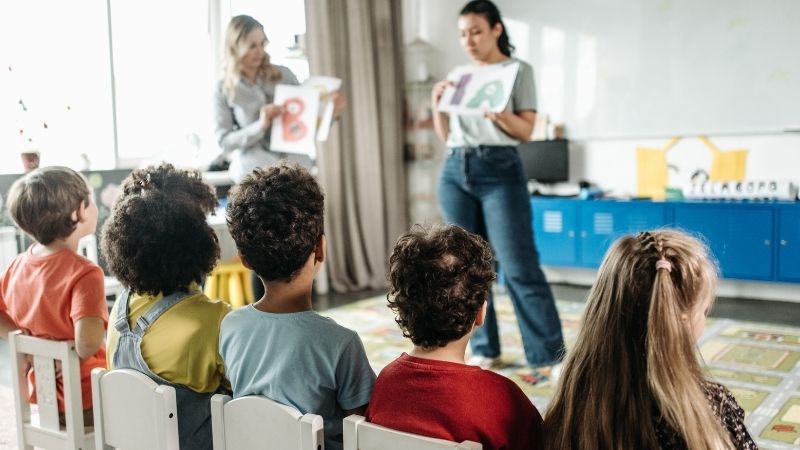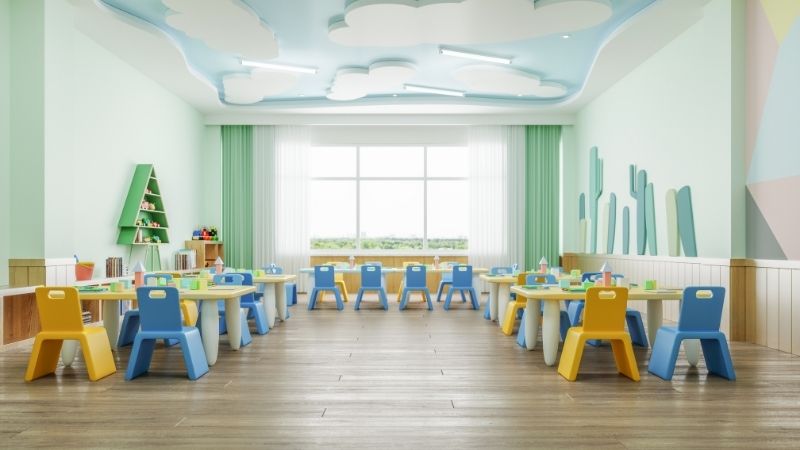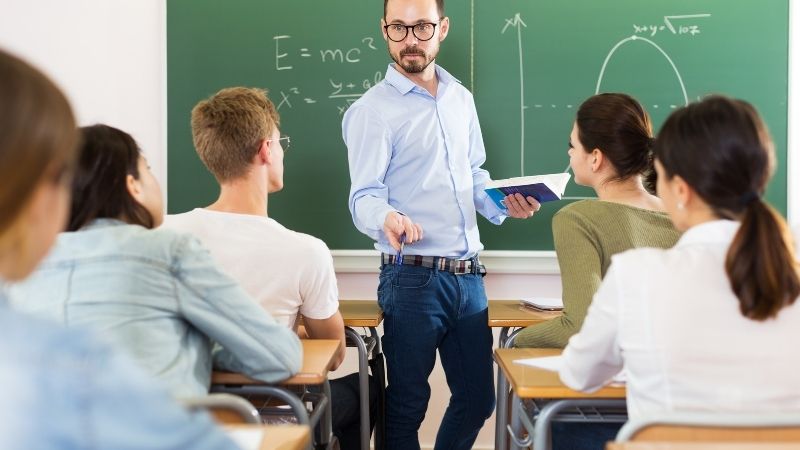
In today's rapidly evolving educational landscape, a one-size-fits-all approach to learning is becoming increasingly obsolete. The advent of adaptive learning has revolutionized the way we deliver education by tailoring content, lessons, pace adjustments, skill gap analysis, and real-time feedback to meet individual needs.
This article delves into the various components of adaptive learning and explores how personalized content, AI-driven lessons, learning pace adjustments, skill gap analysis, and real-time feedback are propelling personalized learning forward.
By examining these elements, readers will gain valuable insights into the effectiveness and potential of this transformative approach to education.
Key Takeaways
- Personalized content caters to individual learners' needs, preferences, and learning styles.
- AI-driven lessons provide tailored guidance and instruction.
- Adjusting the pace of instruction maximizes the effectiveness of educational interventions.
- Skill gap analysis allows educators to bridge gaps and enhance learning.
The Importance of Personalized Content
The importance of personalized content lies in its ability to cater to individual learners' needs, preferences, and learning styles. Adaptive Learning Technology enables the creation of customized learning materials that can be tailored to meet the specific requirements of each learner.
This approach recognizes that not all individuals learn in the same way or at the same pace. By providing personalized content, learners are given the freedom to engage with educational materials that resonate with their own interests and abilities.
Furthermore, adaptive learning technology allows for real-time feedback and skill gap analysis, enabling learners to identify areas where they may need additional support or challenge.
Overall, personalized content enhances learner engagement and motivation by fostering a sense of autonomy and ownership over one's own learning journey.

Harnessing the Power of AI-Driven Lessons
Utilizing artificial intelligence, lessons in education are being enhanced to provide tailored guidance and instruction. This is made possible through the use of AI-driven algorithms that analyze student data and generate personalized learning analytics.
Here are four ways in which AI-driven lessons are transforming education:
Customized Content: AI algorithms can identify a student's strengths and weaknesses, allowing for the delivery of content that is specifically targeted to their individual needs.
Adaptive Assessments: AI-powered assessments can dynamically adjust difficulty levels based on a student's performance, ensuring that they are challenged at an appropriate level.
Real-time Feedback: With AI, students receive instant feedback on their progress, enabling them to make immediate adjustments and improve their understanding of the material.
Remediation Support: AI algorithms can identify skill gaps and provide targeted interventions to help students overcome challenges and strengthen their knowledge.
Adjusting Learning Pace for Maximum Effectiveness
Adjusting the pace of instruction is crucial for maximizing the effectiveness of educational interventions. Individualized instruction and personalized curriculum allow educators to tailor their teaching methods to meet the specific needs and learning styles of each student. By adapting the pace of instruction, educators can ensure that students are neither overwhelmed nor bored, but rather engaged and challenged at an appropriate level.

This approach acknowledges that different students have different learning speeds and abilities, and aims to address these differences through customized instruction. By providing students with a personalized curriculum that takes into account their strengths, weaknesses, and interests, educators can create a more engaging and effective learning experience. This emphasis on individualized instruction and personalized curriculum sets the stage for bridging skill gaps through analysis and adaptation, as it allows educators to identify areas where students may need additional support or enrichment.
Transition: By adjusting the pace of instruction and providing individualized learning experiences through personalized curriculum, educators are able to gain valuable insights into students' skill gaps which can then be addressed through skill gap analysis and adaptation.
Bridging Skill Gaps Through Analysis and Adaptation
By analyzing and adapting to students' skill gaps, educators can effectively bridge these gaps and enhance their learning experience. Skill gap identification is a crucial step in this process, as it allows educators to understand the specific areas where students are struggling or lacking proficiency.
Through personalized learning plans, tailored to address individual skill gaps, educators can provide targeted instruction and support. This approach ensures that students receive the necessary resources and guidance to master challenging concepts. Additionally, personalized learning plans enable students to progress at their own pace, allowing for a more flexible and individualized learning experience.
Real-Time Feedback: Enhancing the Personalized Learning Experience
The incorporation of timely and constructive evaluations can significantly enhance the effectiveness of personalized learning experiences. Real-time feedback plays a crucial role in this process by providing an immediate response to learners' actions, enabling continuous improvement.
Through real-time feedback, learners receive instant information on their performance, allowing them to make necessary adjustments and improvements. This immediate response helps learners identify areas where they need to focus more attention or seek additional support.
Additionally, real-time feedback fosters a sense of autonomy and responsibility in learners as they actively engage with their own learning progress. By promoting self-reflection and self-regulation, real-time feedback empowers learners to take ownership of their learning journey.

Furthermore, it ensures that personalized learning experiences are tailored to individual needs while promoting a culture of continuous improvement and growth.
Frequently Asked Questions
What Are Some Potential Challenges or Limitations of Implementing Personalized Content in Adaptive Learning?
Challenges and limitations in implementing personalized content in adaptive learning include the need for extensive data collection, potential privacy concerns, difficulty in creating truly individualized experiences, and the risk of reinforcing existing biases and inequalities.
How Can Ai-Driven Lessons Enhance the Learning Experience for Students?
The incorporation of AI-driven lessons in the learning process has been found to enhance engagement and improve retention. By leveraging personalized content, real-time feedback, and skill gap analysis, AI-driven lessons adapt to individual needs, providing a more effective and tailored learning experience.
Are There Any Potential Drawbacks or Concerns With Adjusting Learning Pace for Maximum Effectiveness?
Potential drawbacks and concerns may arise when adjusting learning pace for maximum effectiveness. These include the risk of learners feeling overwhelmed or bored, potential gaps in understanding due to faster pacing, and the need for careful monitoring and support to ensure successful outcomes.
How Does Skill Gap Analysis Help in Identifying and Addressing Individual Learning Needs?
Skill gap analysis is a valuable tool in personalized learning as it helps identify and address individual learning needs. By analyzing the gaps between current skills and desired competencies, educators can tailor instructional content to meet specific requirements, promoting effective personalized learning.
What Specific Benefits Does Real-Time Feedback Offer in Personalized Learning?
Real-time feedback in personalized learning offers specific benefits, such as immediate identification of errors or misconceptions, timely interventions to address individual needs, and opportunities for self-reflection and improvement. However, limitations exist in implementing personalized content within adaptive learning systems.
 Careers in EducationElementary EducationHigh School EducationEducational TechnologyTeaching StrategiesSpecial EducationPrivacy PolicyTerms And Conditions
Careers in EducationElementary EducationHigh School EducationEducational TechnologyTeaching StrategiesSpecial EducationPrivacy PolicyTerms And Conditions
